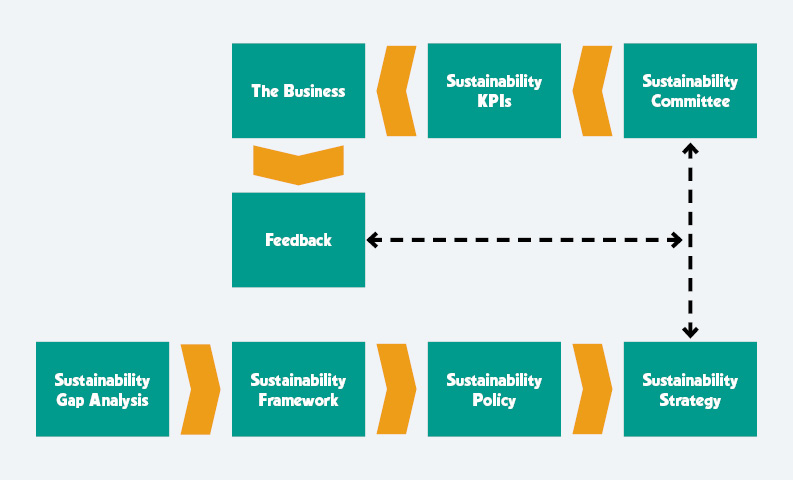Dr Paul Hedayati
Sustainability for Companies: A Journey or a Destination?

Is sustainability a state of being? Can a business claim to be sustainable, or will it be sustainable in two or three years?
To me, sustainability is not a destination to reach; it’s a journey towards flourishing. This journey allows companies to grow in various dimensions, including social, environmental, and economic aspects. But if sustainability is a journey, what does it look like? Where should businesses start their sustainability journey, and what steps should they take along the way?
Here are my brief responses to these questions:
Step 1: Sustainability Gap Analysis
I define sustainability gaps as the differences between a company’s current sustainability practices and the industry’s best practices. For example, let’s consider Company X, which still uses incandescent light bulbs. In this case, the company has a sustainability gap in its lighting system because incandescent bulbs are less energy efficient compared to recommended industry practices such as LED lighting systems. Thus, improving the lighting systems becomes a sustainability goal for the company.
Conducting a sustainability gap analysis helps businesses identify areas where they can grow socially, environmentally, and economically, leading to the establishment of business-specific sustainability goals.
Step 2: Sustainability Framework
While the gap analysis identifies the sustainability goals of a company, it does not prioritise them. Some goals may be more urgent or have shorter timeframes than others. The objective of the second step is to fulfill this limitation ─ prioritising the identified sustainability gaps─ by developing a set of three sustainability frameworks that present the identified sustainability goals in forms of short-, mid-, and long-term sustainability goals.
Step 3: Sustainability Policy
If we consider the sustainability frameworks as visual representations of a company’s short-, mid-, and long-term sustainability goals, the sustainability policy would be a written version of those goals in a comprehensive format. Sustainability policies are often approved by CEOs or the Board of Directors and publicly announced. This commitment is crucial for progressing sustainability within an organisation.
Step 4: Sustainability Strategy
Sustainability strategy of a company details how the company is going to achieve its sustainability goals. For example, in case of the sustainability goal of decarbonisation, the sustainability strategy of a company should present how ─ and how often─ the company is going to measure, benchmark, and report its greenhouse gas (GHG) emissions, and how the company is going to cut its total GHG emissions.
Step 5: Sustainability Committee
The sustainability committee of a company consists of members from different departments of the company, such as finance, procurement, logistics, and others. Its main role is to oversee the implementation of the company’s sustainability strategy. The committee may define and introduce new sustainability key performance indicators (KPIs) or implement existing ones outlined in the sustainability strategy.
Sustainability committees create learning loops within their respective companies by executing sustainability initiatives, gathering feedback, reviewing strengths and weaknesses, and using these learnings for future sustainability actions.
My concluding note is that sustainability for a company is an ongoing process of growth and improvement, requiring thoughtful analysis, strategic planning, and commitment at all levels of the company.

Dr Paul Hedayati
Principal Sustainability Consultant
Dr Paul Hedayati has dedicated more than two decades of his career to consulting, researching, training, and coaching in the sustainability space. As an Environmental, Social, and Governance (ESG) specialist, he has worked in different business setting including government, engineering consulting, tertiary education, and not-for-profit.
Paul has supported a long list of public and private organisations to be:
- more resource efficient,
- more climate resilient,
- more ready for a circular economy, and
- more committed to the principles of ethical procurement.
Partner with us on your next project
Contact our specialised team for more information about our services.